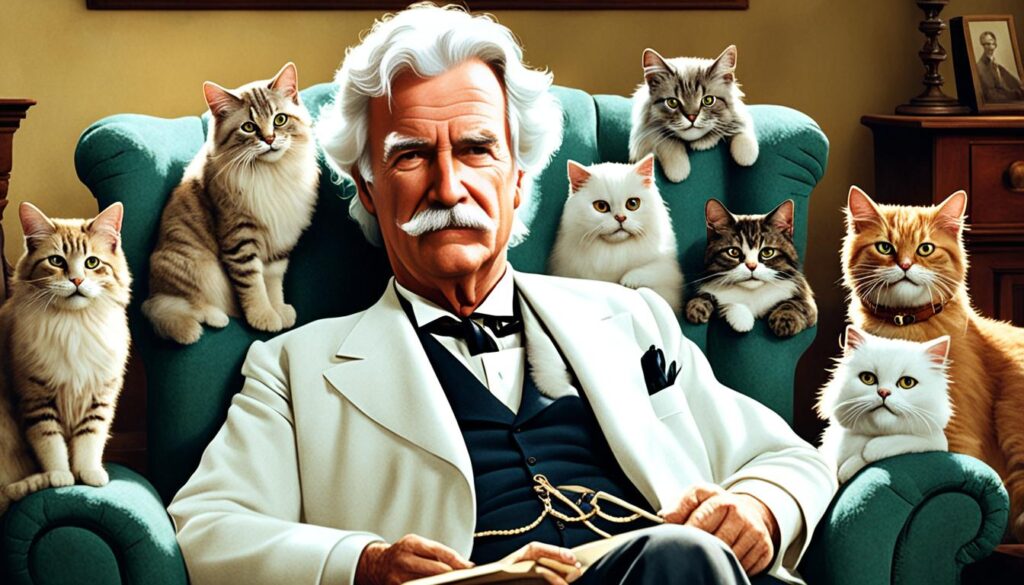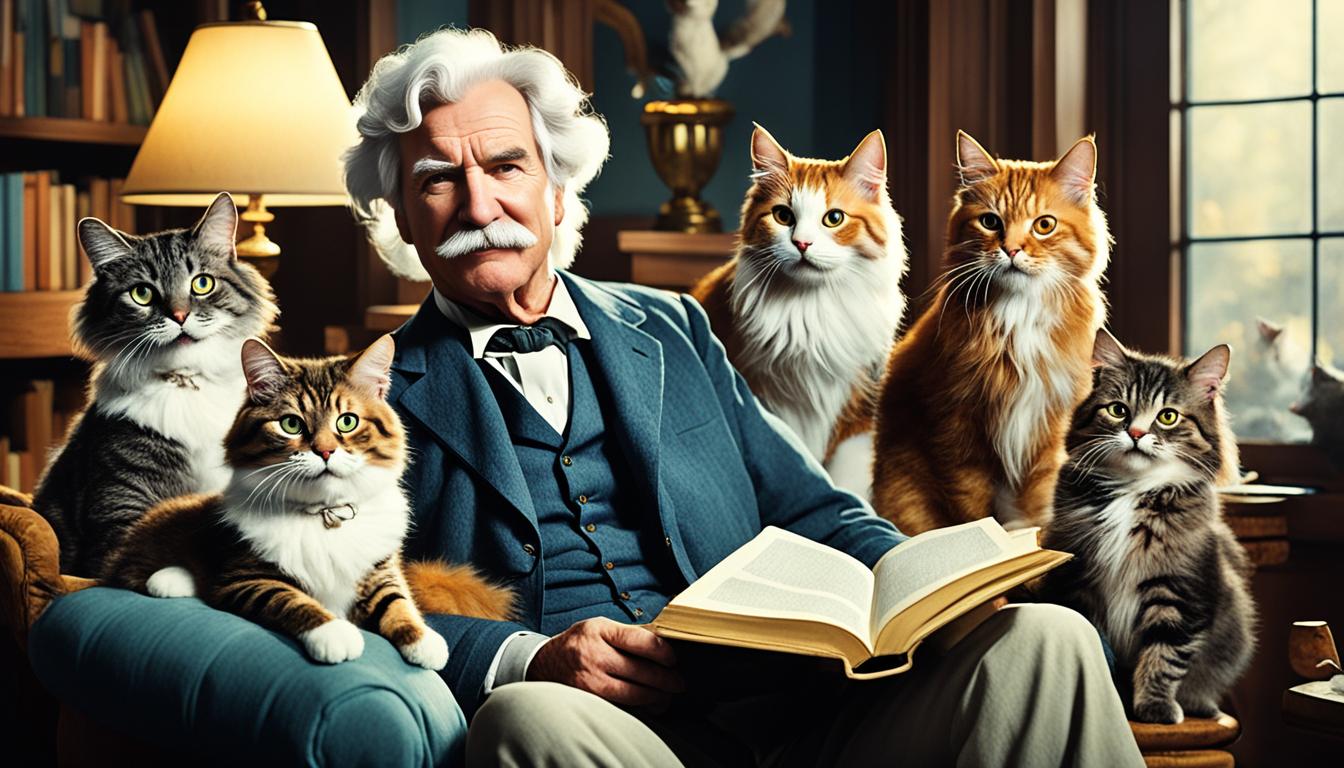Mark Twain, the famous American author, was a devoted cat lover. He found solace and inspiration in feline companions. Twain’s love for cats was so strong that he couldn’t bear to be without them, even while traveling.
Twain’s biographer, Albert Bigelow Paine, noted that he owned up to 19 cats at once. Each cat had a unique name like Apollinaris, Beelzebub, or Sour Mash. Twain’s love for cats extended beyond his home life.
When traveling, if he couldn’t bring his own cats, Twain would rent kittens. This ensured he always had feline companionship on the road.
In 1906, Twain stayed in Dublin, New Hampshire. He rented three kittens for the summer, naming them Sackcloth and Ashes. Paine explained that Twain rented cats to ensure they had proper care when he left.
Twain’s cat-renting habit adds an endearing layer to his fascinating life story. It shows the profound impact these furry companions had on the celebrated author. Cats were not just pets for Twain.
They were an integral part of his creative process and emotional well-being. Twain’s relationship with cats reveals a softer side of America’s beloved literary figure.
Key Takeaways
- Mark Twain was a devoted cat lover who owned up to 19 cats at a time.
- He gave his cats unique and whimsical names like Apollinaris, Beelzebub, and Sour Mash.
- When traveling, Twain would rent kittens to keep him company on the road.
- In 1906, Twain famously rented three kittens in Dublin, New Hampshire, naming them Sackcloth and Ashes.
- Twain’s biographer explained that he rented cats while traveling to ensure they were properly cared for.
Twain’s Lifelong Love of Cats
Mark Twain adored cats from childhood to his final days. His love for felines was a constant throughout his life. Many other famous authors shared Twain’s affection for feline companions.
T.S. Eliot, Patricia Highsmith, and Ernest Hemingway were also devoted cat lovers. Twain’s ailurophilia began in Hannibal, Missouri, and lasted until 1910 in Redding, Connecticut.

Twain’s daughter, Susy, noted her parents’ differences. She wrote, “mama loves morals and papa loves cats.” This statement shows Twain’s deep affection for his feline friends.
During dictation, Twain would pause to care for his kittens. He often put their needs first and treated them with great respect.
Twain believed cats were essential for a loving home. He once said, “A home without a cat may be perfect, but how can it prove title?”
This quote shows Twain’s belief in cats’ importance. He felt they were crucial in creating a warm and loving household.
Twain’s Cat Renting Habit
Mark Twain adored cats so much he rented them while traveling. This unique habit let him enjoy feline company away from home. He found comfort in cats wherever he went.
In 1906, Twain rented three kittens in Dublin, New Hampshire. He named one Sackcloth and the other two Ashes. Twain paid for their care while he was away.
Albert Bigelow Paine, Twain’s biographer, saw him interact with the rented kittens. Twain once bowed and said, “Walk in, gentlemen. I always give precedence to royalty.” This showed his love for cats.
Twain’s cat renting shows his deep bond with these animals. It highlights his commitment to their well-being and appreciation for their companionship. This habit reveals a man whose love for cats was boundless.
Cats in Twain’s Writing and Wit
Mark Twain’s writing often featured cats, showing his love for felines. In The Adventures of Tom Sawyer, a cat named Peter adds whimsy to the story. Twain also used cats in his witty quotes and anecdotes.
He once said, “If man could be crossed with the cat, it would improve man, but it would deteriorate the cat.” This quote perfectly captures Twain’s humor and admiration for cats.
Twain’s cats were more than just literary devices. They were his beloved companions. When his cat Bambino went missing, Twain took action.
He placed an ad in the New York American, offering a $5 reward. Twain described Bambino as “Large and intensely black; thick, velvety fur; has a faint fringe of white hair across his chest.”
The 19th century saw a surge in vampire panics in New England. This was due to a lack of understanding about tuberculosis. People exhumed bodies and burned suspected vampires’ hearts.
As medical knowledge grew, these panics faded away. This dark chapter contrasts with Twain’s lighthearted portrayal of cats in his work.

Leave a Reply